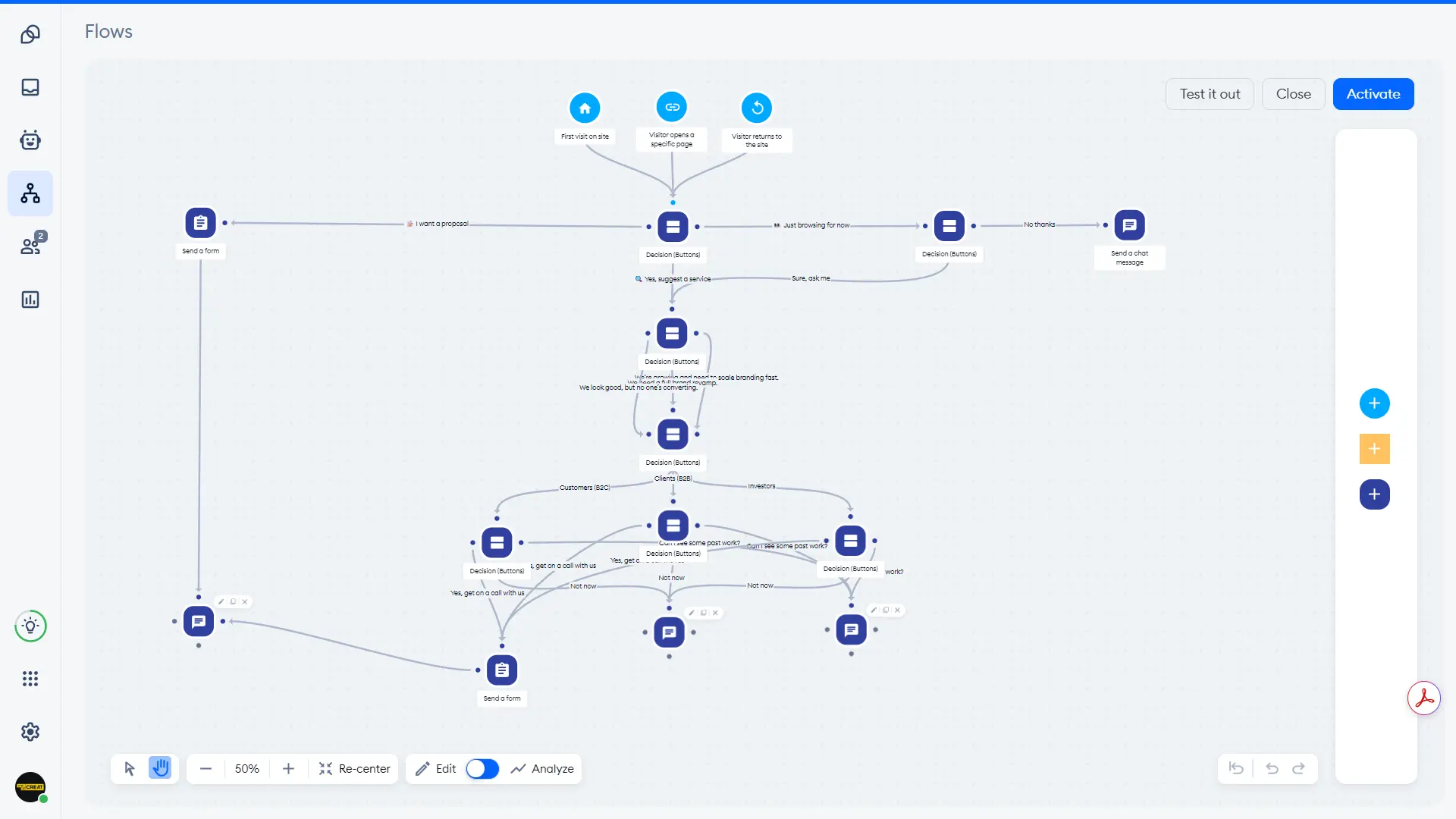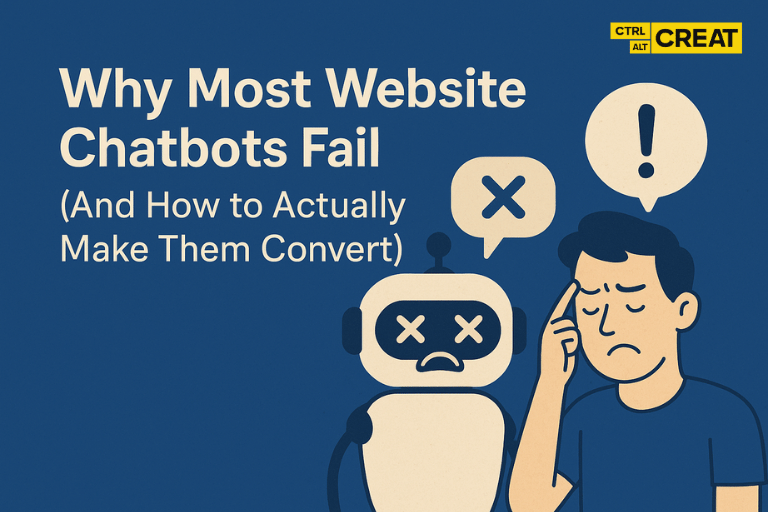Introduction
Most chatbots don’t need better AI—they need better conversation.
Too often, website bots are stuck in loops, push users away, or interrupt at the wrong moment. And businesses are left wondering why visitors bounce before filling that form.
But when you optimize your chatbot flow with real user behavior in mind, it becomes your best closer, not just a responder.
In this blog, we break down why most bots fail, how we rebuilt a high-performing chatbot for a client using NLP and behavior-based logic—and the surprising results it unlocked.
Includes: a downloadable Chatbot Optimization Checklist at the end.
The Problem: Most Bots Are Set Up to Talk—Not Convert
Here’s what traditional chatbots do:
- Pop up on every page
- Ask broad, irrelevant questions
- Provide robotic replies
- Offer no escalation to human help
Here’s what users expect:
- Contextual, helpful prompts
- Smart decision trees that understand their role
- Fast routes to forms, demos, or real people
That mismatch is the real reason most bots fail to convert.
One Reddit user said: “I end up just closing the chatbot every time—it’s like an annoying pop-up with attitude.”
How We Fixed It: Smart Flows Based on Real Behavior

Instead of asking “How can I help you?”, we built the chatbot flow around how the user behaves.
Our Setup Tracked:
- First-time visits
- Returning visitors
- Users stuck on service pages
Each path led to unique decision buttons that sounded like the voice inside the visitor’s head:
- “We look good, but no one’s converting.”
- “Can we scale past word-of-mouth?”
- “I want a proposal.”
This structure instantly filtered traffic into:
- B2B Clients
- B2C Customers
- Investors
Each segment got customized questions and actions.
🎯 Result: +300% proposal form submissions in 30 days. No redesign. Just smarter conversations.
5 Chatbot Optimization Fixes You Can Implement Today
1. Use NLP Triggers, Not Scripts
Bad: “Hi, I’m your assistant. How may I help?”
Better: “Looks like you’re browsing services—want a quick recommendation?”
🧠 NLP framing helps bots sound like people, not FAQs.
2. Segment Your Audience Upfront
Offer buttons like:
- “I’m exploring your services”
- “I’ve worked with an agency before”
- “I need investor info”
Why? It instantly sets intent—and your follow-up flow becomes relevant, not random.
3. Treat Your Chatbot Like a Sales Funnel
Top of funnel = Curiosity → “What do you need help with?”
Mid funnel = Qualification → “What’s your biggest challenge right now?”
Bottom of funnel = CTA → “Let’s send you a proposal form.”
🧭 Not everyone is ready to buy. But everyone can be nudged closer.
4. Offer Escape Routes (No Loops!)
Let users:
- Skip to a human
- Leave feedback
- Say “Not now”
Respect wins trust. And trust increases time spent—plus return visits.
5. Track, Tweak, Repeat
We used “Analyze Mode” to identify:
- Drop-off points
- Button popularity
- Dead ends
Every 2 weeks, we rewrote unclear flows, added new user intents, and deleted what didn’t work.
🚀 Your bot should evolve like your landing pages do.
Case-in-Point: How We Tripled Proposal Submissions
A Ctrl+Alt+Creat client had solid traffic, but low conversions.
Problem:
- Chatbot was a one-size-fits-all pitch machine
- Most users dropped after the first message
What We Did:
- Mapped intent paths for new, returning, and comparison shoppers
- Segmented B2B/B2C/investors
- Added form-based CTAs with NLP-infused button prompts
🎯 Results in 30 Days:
- +300% form submissions
- 2.6x increase in call bookings
- 41% drop in bounce rate on services pages
All without touching the website UI.
FAQs
Want us to audit your chatbot?
We build behavior-based, NLP-powered bots that guide visitors from “just browsing” to “just bought.”
